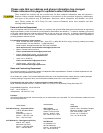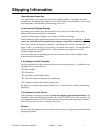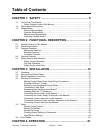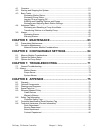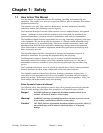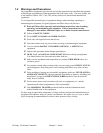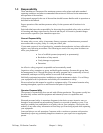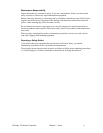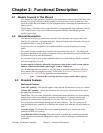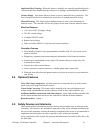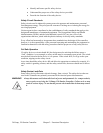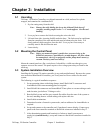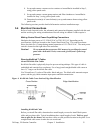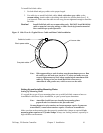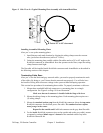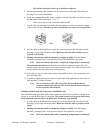
24-Pump, 128-Station Controller Chapter 2: Functional Description 9
Chapter 2: Functional Description
2-1 Models Covered in This Manual
This manual provides operation, installation, and maintenance instructions for 24-Pump, 128-
Station Conveying Controllers. Model numbers are listed on the serial tag. Make sure you
know the model and serial number of your equipment before contacting the manufacturer for
parts or service.
The 24-Pump, 128-Station Conveying Controller is a programmable logic controller, with 24
VDC control circuit, easy-to-use touch screen operator interface terminal and optional
audible/visual alarm.
2-2 General Description
Our material conveying systems create vacuum for the automatic conveying of most free-
flowing, dry, pelletized, or granular materials. Material characteristics determine the type of
equipment needed to convey the material.
A typical use for our equipment is an in-plant distribution system for plastic processing
plants.
Our central vacuum systems are as varied as the applications they service. The tubing and
equipment furnished in our system is designed to convey the material(s) specified at the time
of purchase at specific rates and distances.
We can advise you on your system capabilities based on system makeup, distance, material,
and conveying rates you want.
System capacity is directly affected by the pressure drop in the overall system, such as
number of material line bends, pipe length, Y-tubes, T-tubes, etc.
Use the minimum effective amount of vinyl flex hose to maximize material line efficiency.
Keep material lines as straight as possible. Refer to the Mechanical Components Product
manual (Part No. A0536580) for installation recommendations.
Note: Vacuum leaks occurring anywhere in your system reduce capacity.
2-3 Standard Features
Mechanical Features
Time-fill Capability. The specific length of time allowed for material to convey to a station.
Volume-fill Capability. Allows for a station to be conveyed to until the prox at the top of
the station detects material.
Vent Valve. The vent valve unloads the vacuum pump motor and allows it to keep running
during short periods when material conveying is not required. Constantly starting and
stopping the vacuum pump will damage it over time. The vent valve also protects the
conveying system from damage during high vacuum conditions. The valve plunger will
unseat itself and allow ambient air to leak into the vacuum lines when the vacuum climbs too
high.
Central Purging. This feature allows any remaining material to be cleaned out of the
material line after every convey.
Local Blowback Filter Cleaning. When this feature is enabled, the controller periodically
sends compressed air backward through the pump’s air filter to dislodge accumulated dust
and debris.



